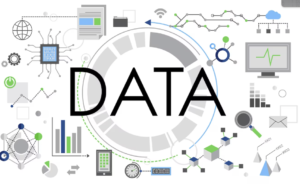Unveiling the Power: Exploring Different Features of Big Data Analytics
In the digital era, the ability to harness and derive meaningful insights from vast amounts of data has become a game-changer for businesses across industries. Big Data Analytics is the driving force behind this transformation, offering a myriad of features that empower organizations to make informed decisions, identify patterns, and unlock new opportunities. In this comprehensive guide, we’ll delve into the different features of Big Data Analytics, breaking down the complexity to reveal the core elements that make it such a powerful tool for businesses.

1. Data Collection and Integration:
Simplified Overview:
The first step in the Big Data Analytics process is collecting and integrating data from various sources. This can include structured data from databases, unstructured data from social media, and semi-structured data from sources like XML files.
Importance:
The feature of collecting and integrating diverse data sets ensures a comprehensive view, allowing organizations to analyze information from different angles and gain a holistic understanding of their operations and customers.
2. Data Storage:
Simplified Overview:
Big Data Analytics relies on robust storage systems that can handle massive volumes of data. Distributed file systems like Hadoop Distributed File System (HDFS) and cloud-based storage solutions are commonly used for efficient data storage.
Importance:
Effective data storage ensures that organizations can manage, organize, and retrieve large datasets efficiently. This feature is crucial for scalability and the ability to handle the ever-growing volumes of data in the digital landscape.
3. Data Processing:
Simplified Overview:
Data processing involves transforming raw data into a usable format for analysis. Technologies like Apache Spark and Apache Flink facilitate high-speed data processing, enabling organizations to analyze data in near real-time.
Importance:
Rapid data processing is essential for timely decision-making. This feature allows organizations to extract valuable insights promptly, keeping them agile in a fast-paced business environment.
4. Data Analysis and Exploration:
Simplified Overview:
The heart of Big Data Analytics lies in data analysis and exploration. Tools like Apache Hadoop and Apache Spark, along with programming languages like Python and R, enable organizations to perform complex analyses, including statistical modeling and machine learning.
Importance:
The ability to analyze and explore data empowers organizations to uncover patterns, trends, and correlations. This feature is fundamental for making data-driven decisions and gaining a deeper understanding of business dynamics.
5. Data Visualization:
Simplified Overview:
Data visualization tools like Tableau and Power BI transform complex datasets into visual representations such as charts, graphs, and dashboards. These visuals make it easier for non-technical users to understand and interpret data.
Importance:
Data visualization enhances communication and decision-making. This feature allows stakeholders to grasp insights at a glance, fostering a more intuitive and accessible approach to data analysis.
Also Read: The Power of Cloud Business Intelligence Solutions for Modern Business Success
6. Scalability:
Simplified Overview:
Scalability in Big Data Analytics refers to the system’s ability to handle an increasing volume of data and growing computational demands. Cloud-based solutions, in particular, offer scalable infrastructure.
Importance:
Scalability ensures that organizations can adapt to the changing demands of data processing. This feature is crucial for accommodating business growth and evolving data requirements.
7. Security and Compliance:
Simplified Overview:
Security features in Big Data Analytics include encryption, access controls, and compliance measures to protect sensitive information. Ensuring compliance with data protection regulations is a key consideration.
Importance:
Security and compliance features are paramount to maintaining the integrity and confidentiality of data. Organizations must prioritize these aspects to build trust and adhere to legal requirements.

8. Real-Time Analytics:
Simplified Overview:
Real-time analytics involves analyzing data as it is generated to provide immediate insights. Technologies like Apache Kafka and Apache Flink support real-time data processing.
Importance:
Real-time analytics is crucial for industries where timely decision-making is paramount, such as finance, healthcare, and e-commerce. This feature enables organizations to respond swiftly to changing conditions.
Also Read: Unleashing the Power of Cloud Business Intelligence Software: A Comprehensive Guide
9. Predictive Analytics:
Simplified Overview:
Predictive analytics involves using statistical algorithms and machine learning models to predict future trends and outcomes based on historical data. Tools like Python’s scikit-learn and TensorFlow support predictive modeling.
Importance:
Predictive analytics empowers organizations to anticipate future scenarios, enabling proactive decision-making. This feature is particularly valuable for strategic planning and risk management.
In Conclusion:
In conclusion, the features of Big Data Analytics collectively form a robust framework that empowers organizations to transform raw data into actionable insights. From data collection and storage to advanced analytics and real-time processing, each feature plays a crucial role in the journey towards data-driven decision-making. As businesses continue to navigate the complexities of the digital landscape, understanding and leveraging these features will be essential for staying competitive and innovative in the ever-evolving world of Big Data Analytics.

Comments
Post a Comment